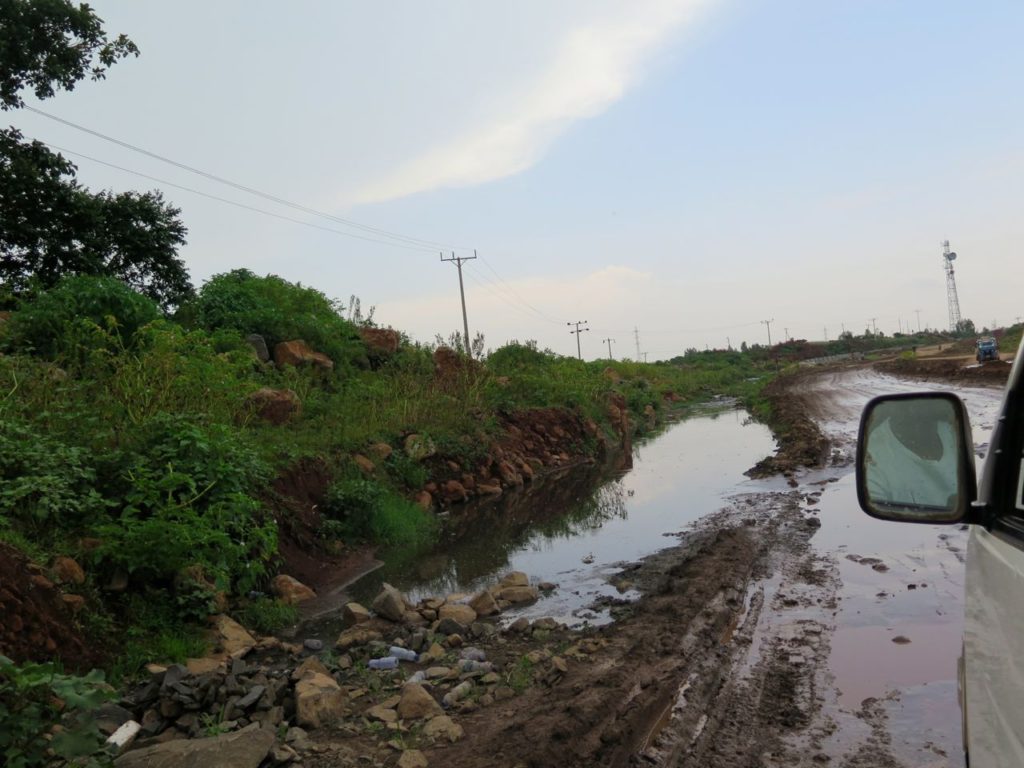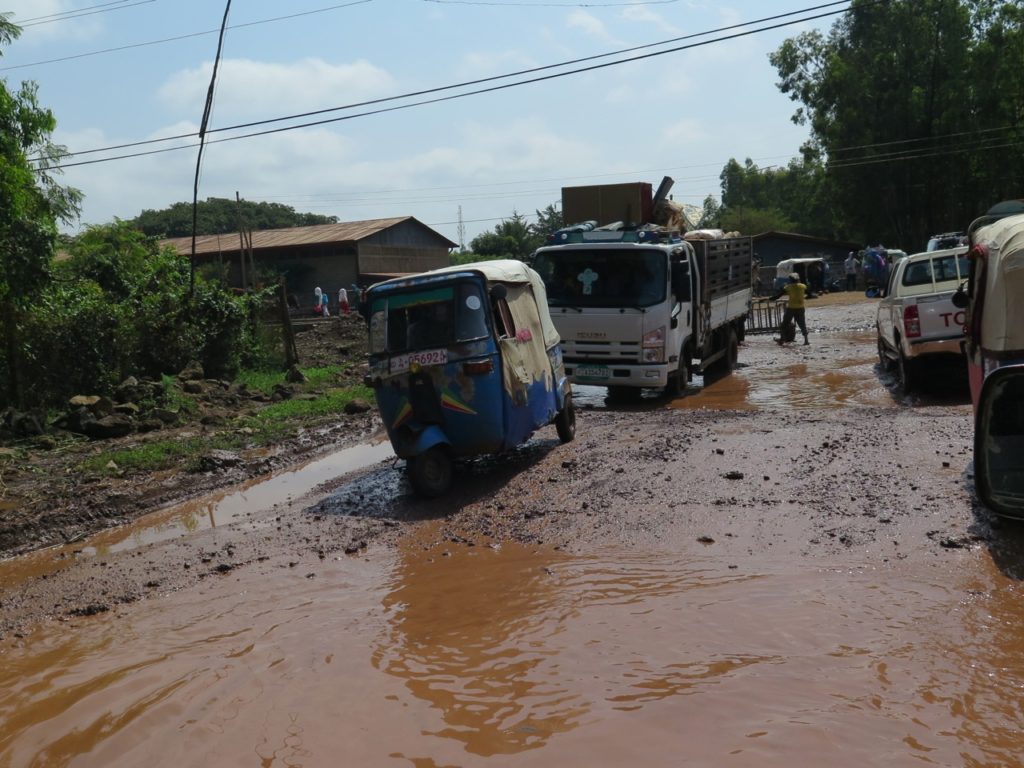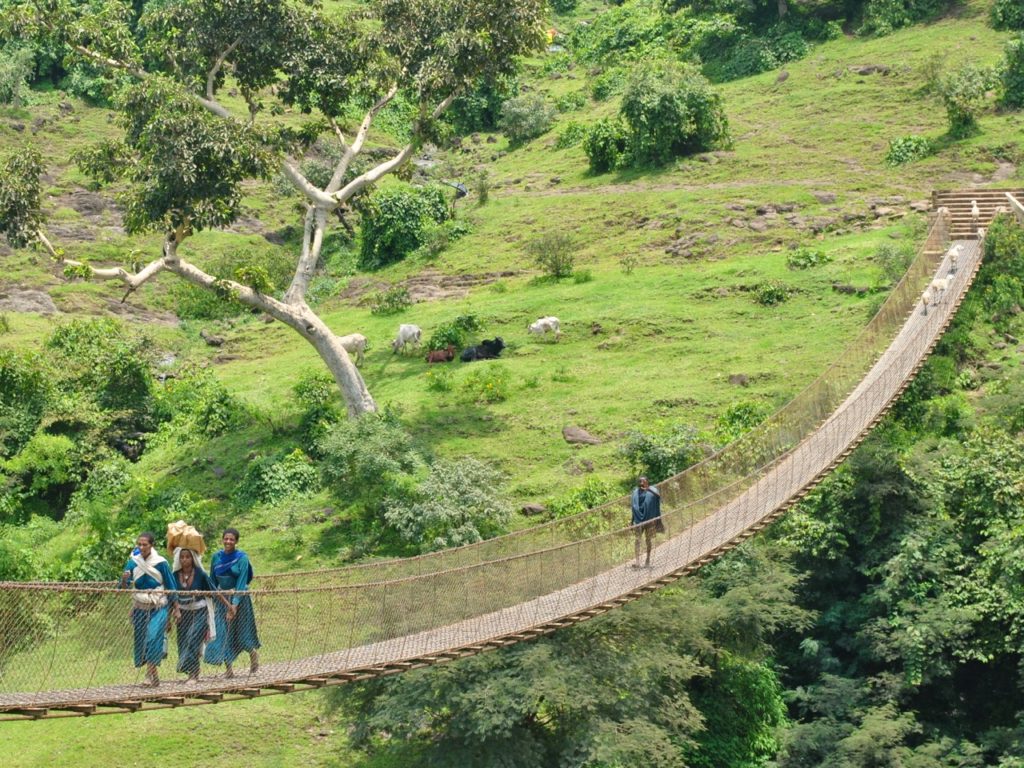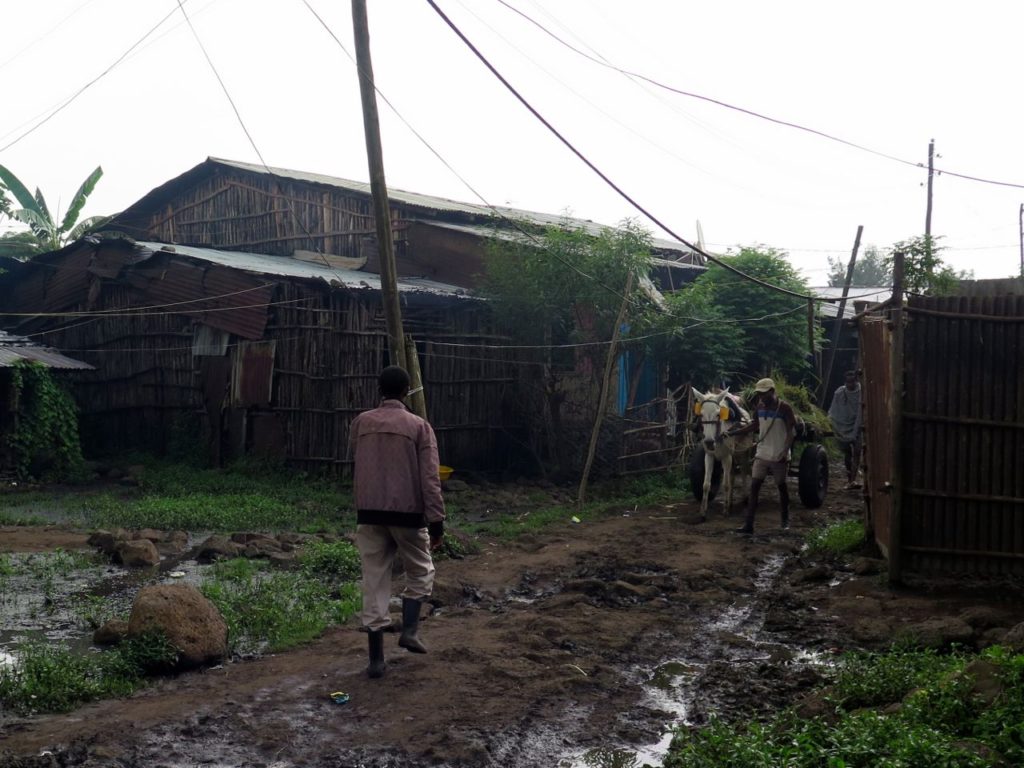Blue Nile falls in Ethiopia known as Tis Issat (Smoke of Fire) or Tis Abay (Smoke of the Nile) are about 30 km downstream from the lake Tana – the source of Blue Nile. We visited in September 2017 – the end of the rainy season when water level is the highest and the falls are at their most impressive. The falls are a worthy day trip from Bahir Dar – a city on lake Tana and a capital of Amhara region.
We went to the falls on Saturday – a market day – and it was the market day ahead of Ethiopian new year celebrated on September 11 (Ethiopia has its own calendar with 13 months in it). Bahir Dar is the capital of the region and the main commercial center and market town. With the new year’s market on, some of the main roads in the city were closed so we had to drive around through back roads which are not sealed.
It’s being the end of the rainy season some of the roads looked more like rivers. So the trip to the falls took us a bit longer than expected 1.5-2 hours but also gave a glimpse of life in the town off the main street. Once we reached the main road, we saw a constant flow of people heading to the market in Bahir Dar from surrounding villages. Men herding goats, sheep and cows and women carrying sacks of grain or baskets with chickens and all sorts of other produce on their heads.

The road to the falls runs through picturesque fields with mountains in the distance. After the rainy season the fields were bright emerald green. And all along the way we saw farmers walking down the road to do their holiday buying and selling. The Blue Nile falls may be one of the major tourist attractions in the area but the road to them is still a work in progress. Reportedly during the dry season it is not an issue but after heavy rains parts of it are barely passable and 4×4 is essential.
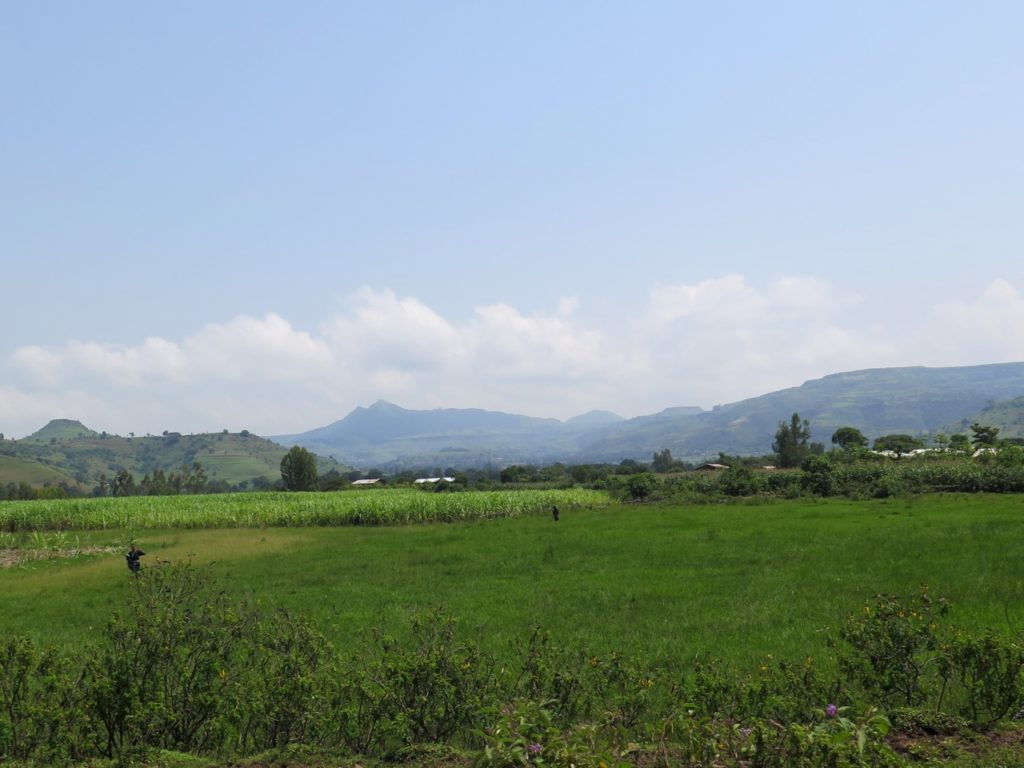

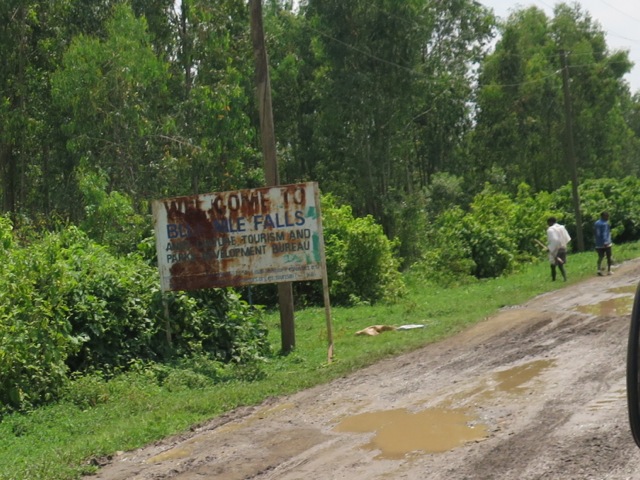
The starting point for the track to the falls is the village of Tis Abay (also called Tis Issat) – both of which are the names for Blue Nile falls – so basically the Blue Nile falls village. Being a market day, it was very busy and took us a while to get through the main street with all the shoppers sharing the road with vehicles. We picked up our guide – advisable not because it would be difficult to find the way to the falls but to avoid harassment along the trail by unofficial guides and locals – and set of for the falls.
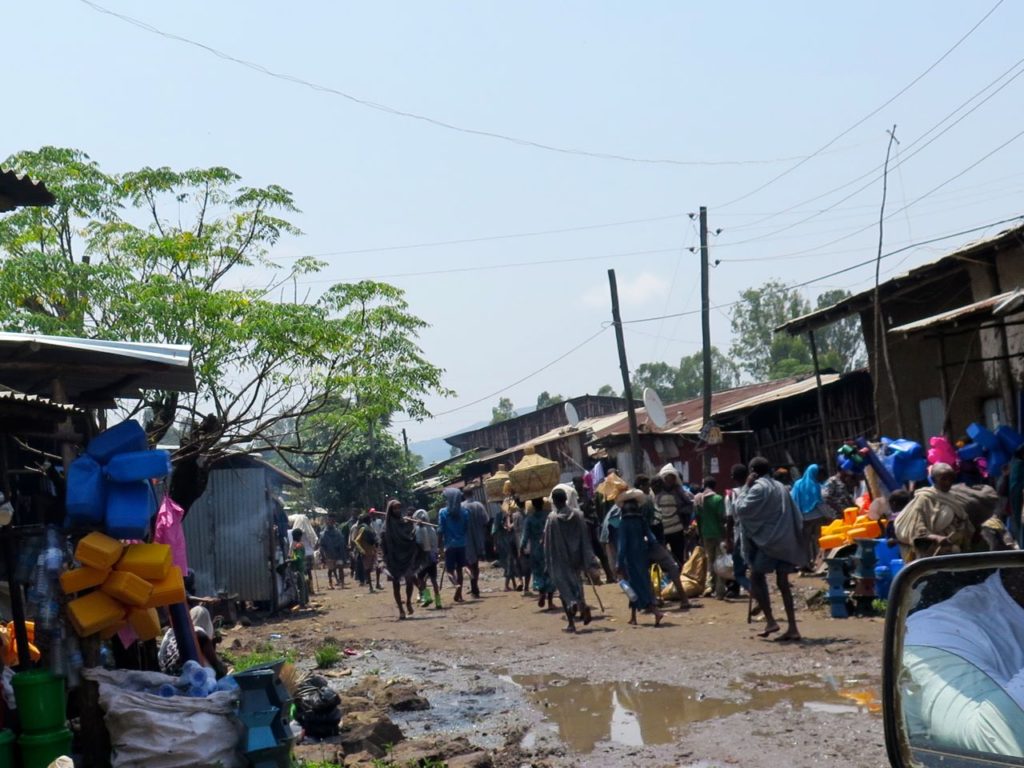
The falls are an easy walk and we reached the first view point in about half hour stopping frequently taking pictures. Parts of the trail got quite muddy and slippery after the rain so it is a good idea to have proper shoes and definitely not advisable to try to do it in flip flops. The walk starts by crossing a stone bridge built by Portuguese in 1626 – presumably the oldest stone bridge in Ethiopia.
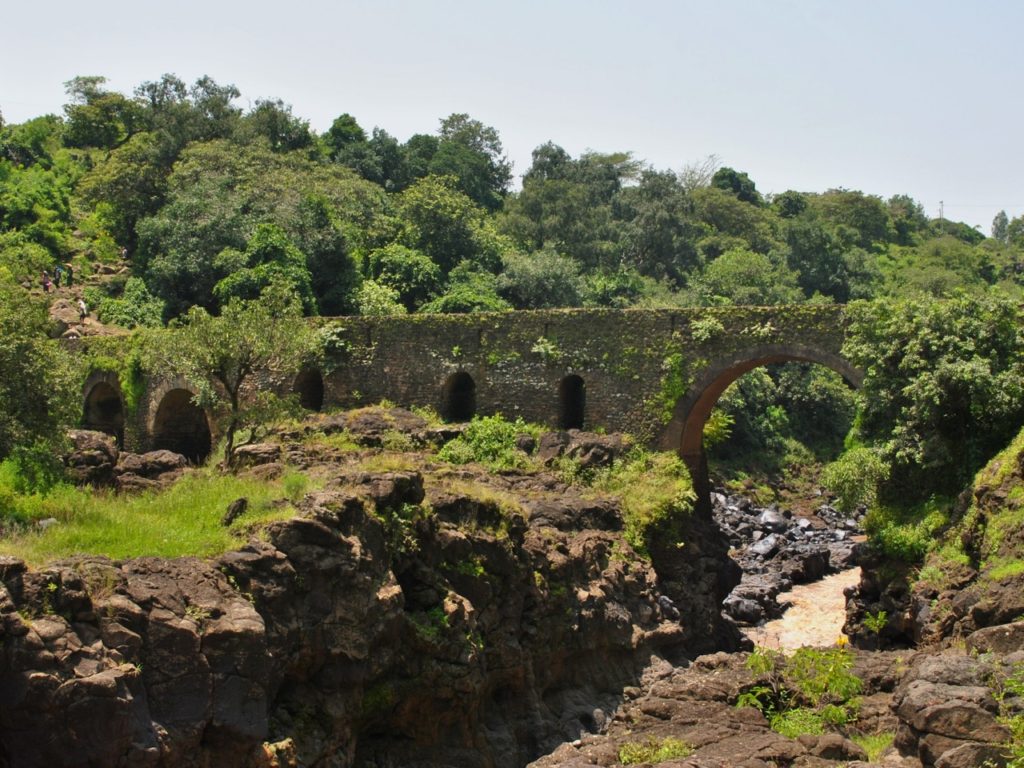
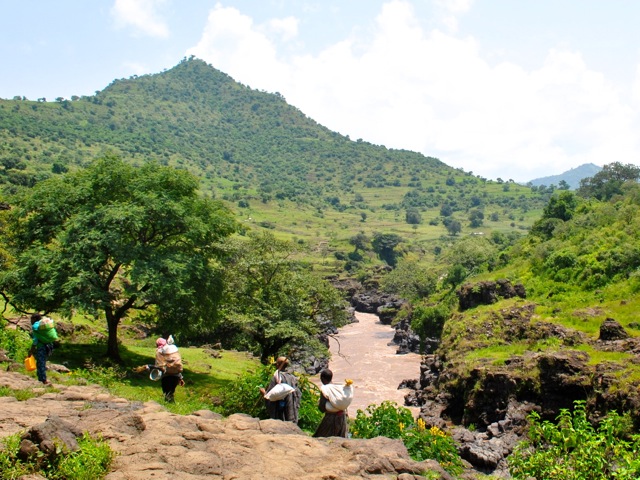
Walking up the hill we could hear the waterfall’s roar and once up the hill the first view of the falls was spectacular. The volume of water has declined in recent years since part of the river was diverted to hydropower plant and in dry season there is very little of water trickles through. When we were there in September at the end of the rainy season though there was plenty of water plunging down the cliffs with spray reaching across the gorge and you could understand why the local name for the falls was Smoke (of the fire or of the Nile).
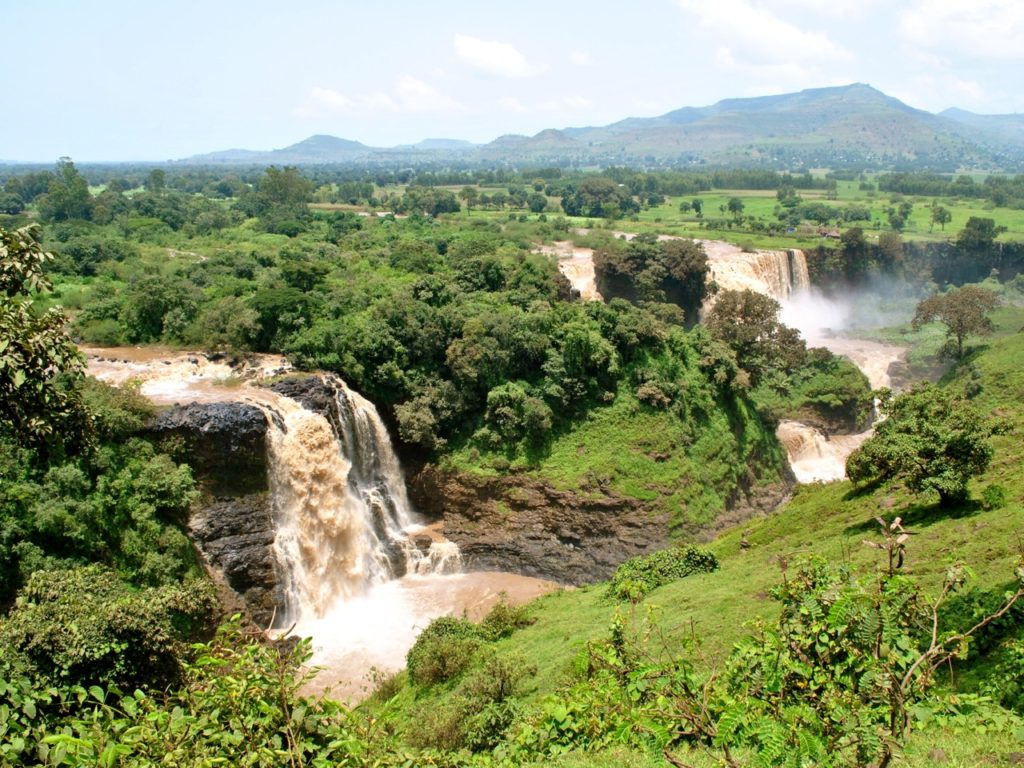
We walked along the falls enjoying the beautiful scenery. There were very few tourists around I think we only saw two or three other small groups mostly couples or families. Instead we saw many locals going to and from market, herding their cattle, fetching water or just going somewhere. As in most places in Ethiopia cattle is pretty much everywhere – including right in front of the waterfalls. Giving the place a very un-touristy feel.
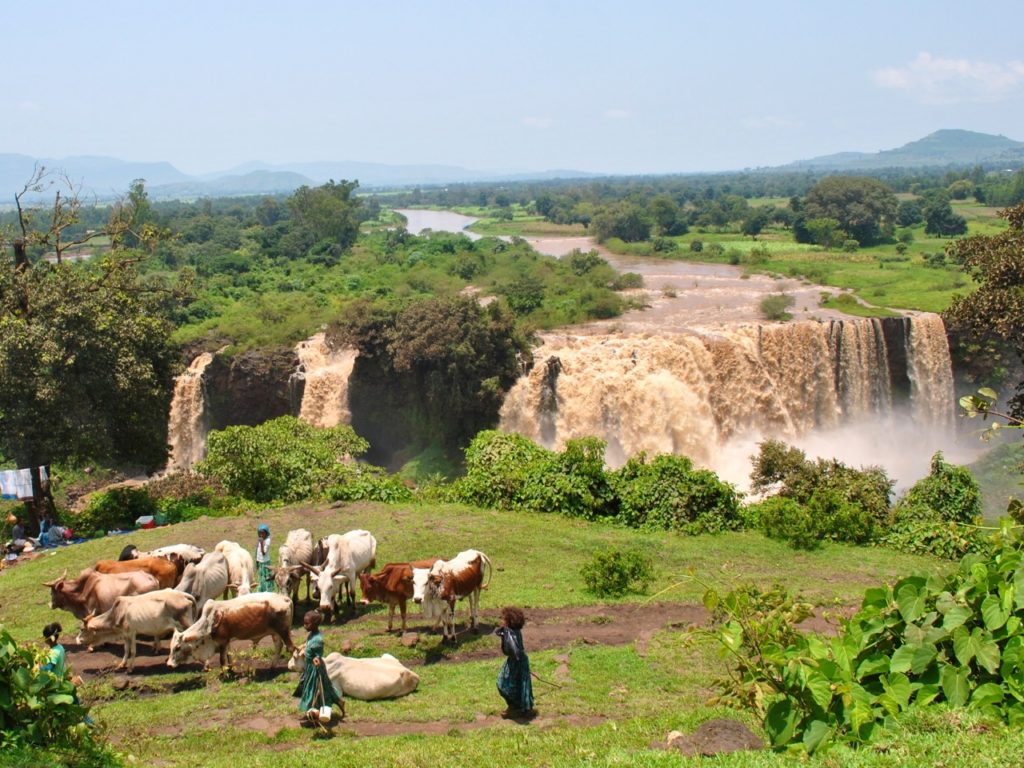
We walked down at the other end of the falls, got properly drenched by the spray and had to give up on getting the up-close photo of the falls. The option for return was to either walk back the same way or proceed further, over suspension bridge and by ferry back to the village. We went for the latter option and crossed over the suspension walking bridge – this one Swiss built in the late 20th century – sharing the bridge with a few goats and giggling local girls.
Once on the other side we walked through the fields to the little ferry boat that took us across the Nile back to Tis Abay village. We then walked through some backyards and alleys of the village to get back to our car for the return drive to Bahir Dar. By this time the rain started but we made it back without getting stuck.
It was a nice trip and waterfalls are definitely worth it. Lack of infrastructure and the fact that the falls are not fenced off into a park only for visitors adds to the uniqueness of the adventure. Most likely things will be changing and there might even be hotels around the falls once the road is improved. In the mean time there is a way to see one of the major waterfalls in a very un-touristy way – a rare chance. It is also good to combine with visiting monasteries and watching hippos and birds on Lake Tana using Bahir Dar as a base.
